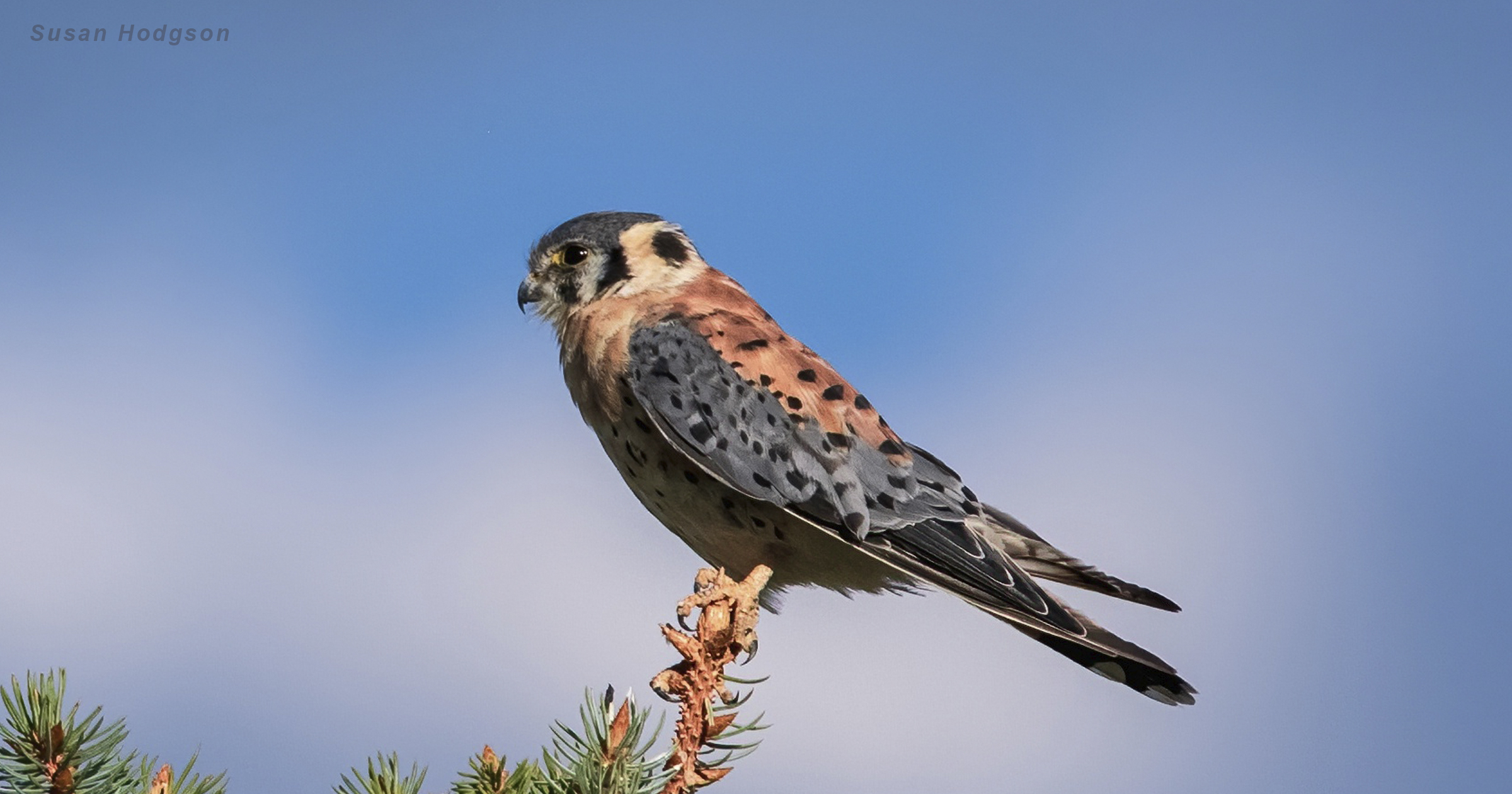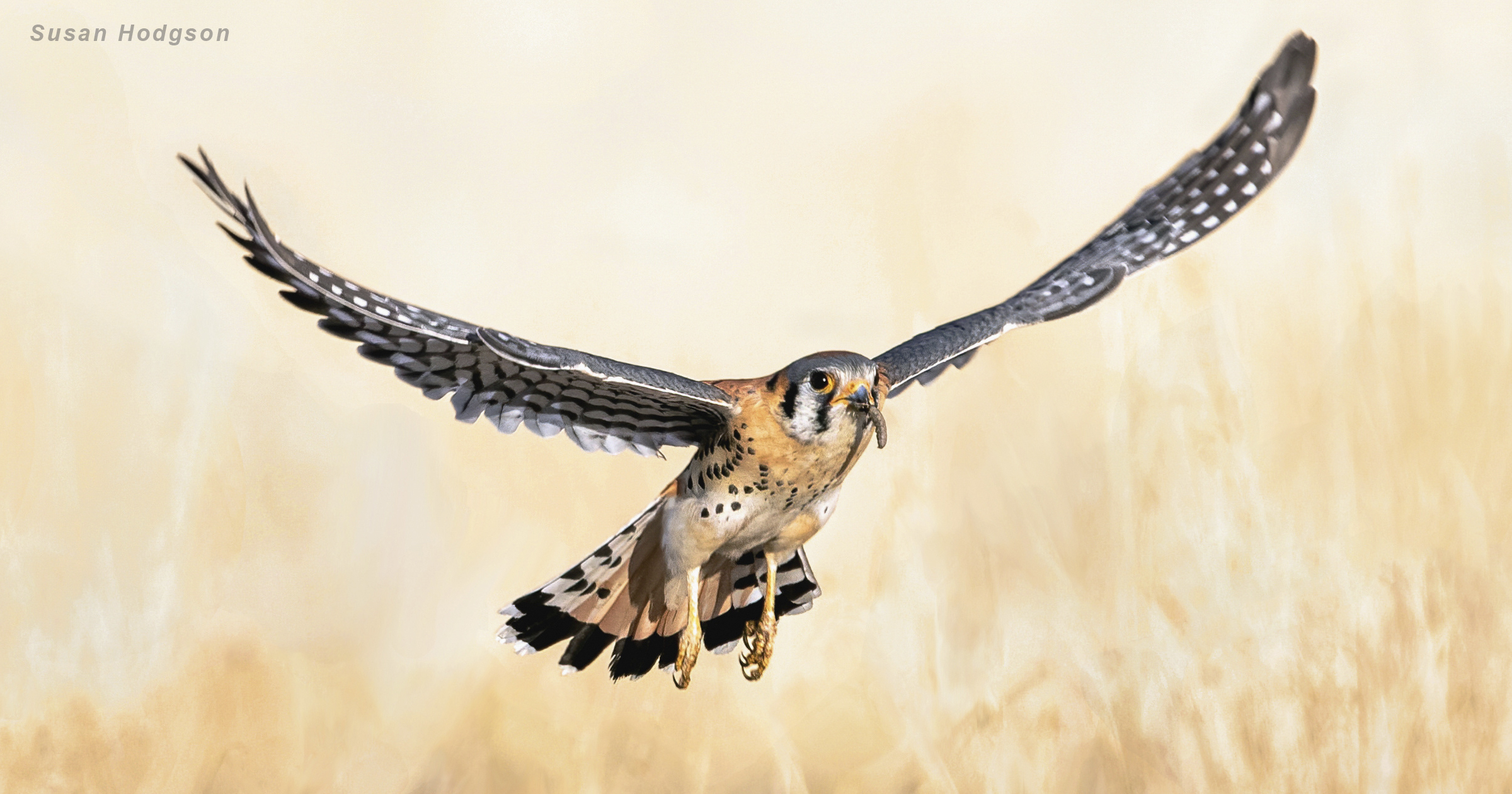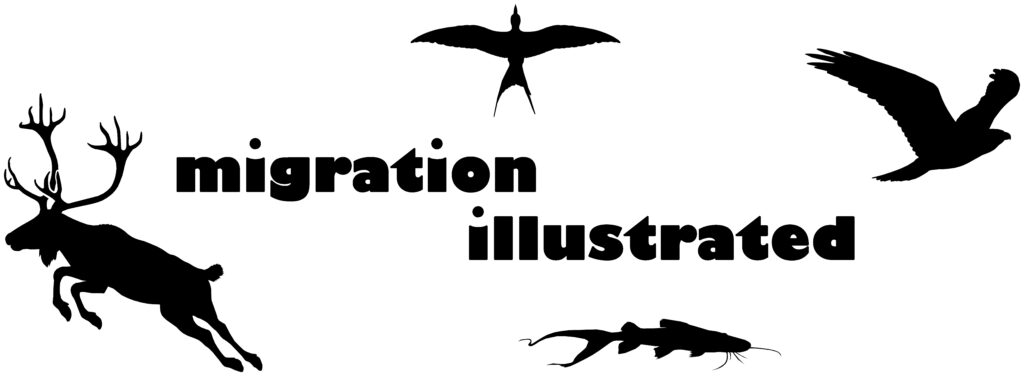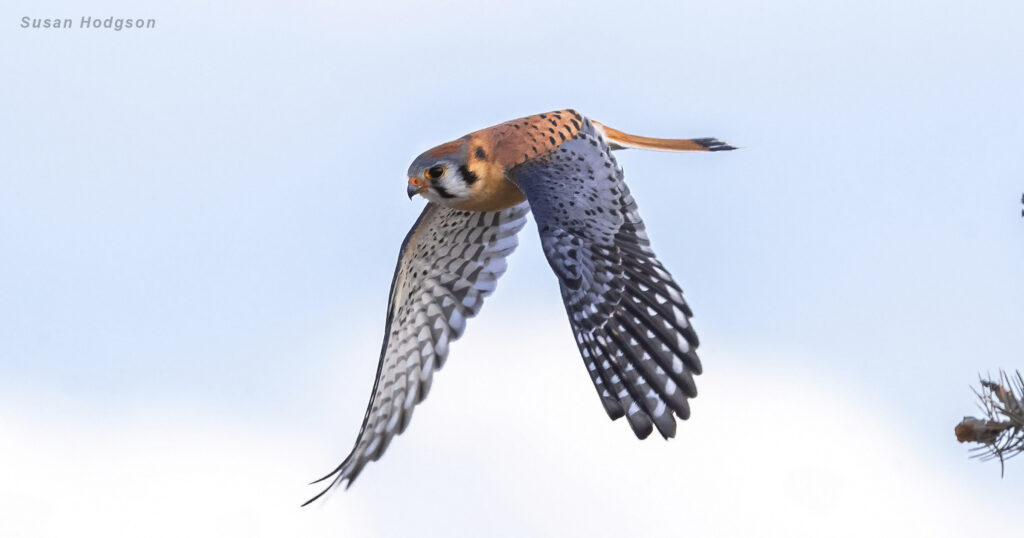American Kestrel by Wildlife and Nature Photographer Susan Hodgson of Denver, Colorado

Migration Illustrated
PRESENTS
The American Kestrel
Susan Hodgson of Denver, Colorado
Falco sparverius
The American Kestrel, North America’s most prevalent falcon, can range as far north as Alaska and Nova Scotia and as far south as central Mexico and the Caribbean. Beginning their migratory route in the spring, they head home to their breeding grounds in the north. Once there, these spunky little falcons quickly establish a territory and can be loud and aggressive toward other birds. American Kestrels are opportunistic nesters who will settle into a hole in a tree, a crevice on a cliffside, a crack in the side of a building, or even a nest box.
Male Kestrels seek out perfect nest sites and put on fantastic aerial displays accompanied by calls to prospective mates. Once a female makes her choice, a courtship-feeding ritual will follow. The female will then choose a nest, often the same as the year before, and lay her eggs directly on the bare nest floor. Both parents will take turns incubating until their chicks hatch around thirty days later.

American Kestrel Perched by Wildlife and Nature Photographer Susan Hodgson of Denver, Colorado
CUNNING and SWIFT
North America’s most colorful falcons are also the smallest and easiest to recognize. These swift predators have short, hooked beaks, long tails, featherless legs, and excellent camouflage. Males have distinctive blue grey wings among blends of reds and browns while females are red and brown, with dark barred wings. With distinctive stripes on their faces, black spots on their heads, and multiple spots on their bodies, they can be difficult for prey to spot.
American Kestrels are cunning predators who mostly still hunt from a perch but will hover over fields and open country in search of prey. Their diet includes amphibians, birds, insects, reptiles, and small mammals commonly found in grasslands, marshes, farmland, and parks.
Come autumn, American Kestrels head south on their annual trek. Four billion birds join the North American migration in search of warm weather and more abundant food. Winter can be a challenging time with so many competing for limited resources.

American Kestrel in Flight by Wildlife and Nature Photographer Susan Hodgson of Denver, Colorado
While many bird species are recovering, American Kestrel populations are declining, and scientists aren’t sure why. Continued research is required to ensure the long-term survival of this magnificent little raptor.
THE LONG AND SHORT OF IT
Wingspan: 45 to 60 centimeters (18 to 24 inches)
Length: 20 to 30 centimeters (8 to 12 inches)
Weight: 7 to 12 centimeters (3 to 5 ounces)
Lifespan: < 5 Years in the wild (<17 in Captivity)
Speed: Up to 62 kilometers per hour (39 mph)
Dive: Up to 96 kilometers per hour (60 mph)
Breeding: Early Spring to Late Summer
Population: > 4 million birds (declining)
The American Kestrel
Falco sparverius
– – –

A photographic journey along the migration routes of the world’s most fascinating species with some of the wildest road warriors this side of the universe. In color and in style.


